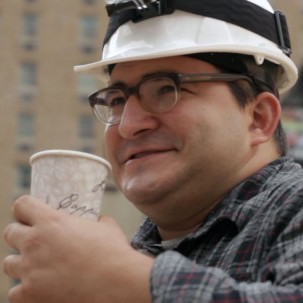Date/Time
Date(s) - October 5, 2017
5:00 pm - 7:00 pm
Location
Gregory Allicar Museum of Art, University Center for the Arts
Thursday, October 5, 2017
 DAVID BROOKS is internationally known for an artistic practice that considers the relationship between individuals and the built and natural world, while also questioning how nature is perceived and utilized. His work has been exhibited nationally and internationally in both solo and group exhibitions that examine the environment and sustainability.
DAVID BROOKS is internationally known for an artistic practice that considers the relationship between individuals and the built and natural world, while also questioning how nature is perceived and utilized. His work has been exhibited nationally and internationally in both solo and group exhibitions that examine the environment and sustainability.
Weld County, which arguably has the densest number of active fracking wells in the country, is most shocking not in this particular fact, but more so in the lack of visual evidence of such a foreboding truth. Ranch houses, playgrounds, charming school grounds, big skies and ample amenities for a comfortable suburban life all deny the reality of what lies beneath this masterfully crafted image of normalcy. A map illustrating the underground network of active gas extraction lines reveals a sprawling, tightly-knit mesh of export pipelines sitting just below the playgrounds, carpeted living rooms, stocked grocery stores, and manicured front lawns. This super infrastructure is something usually placed deep in the desert, under the ocean, or otherwise marginalized, so as to limit human contact with its dangers. But in Weld County, the domestic, and the everyday come in intimate proximity to the inhuman-scaled industries of resource extraction.
How we see the landscape mirrors how we inhabit the landscape and ultimately how we consume and shape the landscape. It would follow that how we see the landscape is a reflection of the guiding ideologies of our distinct time and place. Case Study: Weld County, CO consists of re-assembled 3D prints of real homes, all lying within one hundred feet of active fracking well pads in Weld County. Image scans were taken only from what was observable from a pedestrian’s point of view, from sidewalks, roads or public paths. This restricted approach to the scanning process presented anomalies within the modeling program. When the consecutive images were assembled to form a 3D model, the software unpredictably supplemented missing information or omitted existing information. In some cases the sky folded into rooflines and exterior space was mistaken for interior space. Such deformations make evident the disconnect between our actions and how we perceive them. This exhibition looks at how we normalize our impact on the natural world as well as the perceived consequences to our own health.